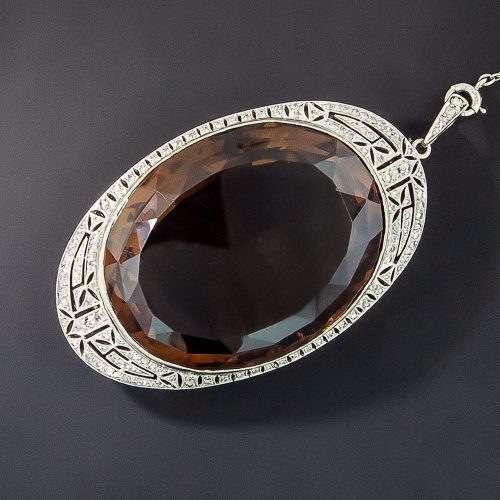
A mineral is any naturally occurring inorganic solid created by a geological process that has a specific chemical composition, a highly ordered atomic structure (usually possessing a crystal structure) and specific physical properties. Crystal structure is critical to a mineral’s physical properties. Diamond, the hardest naturally occurring substance, is made up of pure carbon, but its crystal structure is what separates it from graphite, a very soft substance that is also pure carbon.
Minerals can be pure elements or simple salts ranging to very complex silicates. Most inorganic gemstones are minerals (a very common one is quartz.) When minerals occur in an aggregate they form a rock. Most gemstones are not rocks, with a few notable exceptions such as lapis lazuli.
Minerals are classified by their physical properties. Some of these properties are easily observable and others require specialized equipment and extensive testing.
Classification of Minerals by Physical Properties
| Classification | Properties |
|---|---|
| 1. Crystal Structure or Habit | The usual shape of a mineral base upon the arrangement of atoms in its atomic structure. |
| 2. Hardness | Physical hardness of a mineral based on the Mohs Scale of hardness. |
| 3. Luster | The way a mineral's surface interacts with light. |
| 4. Color | The appearance of a mineral in reflected light or transmitted light, using the naked eye. |
| 5. Streak | The color left behind when a mineral is scraped across an unglazed porcelain plate (streak plate) |
| 6. Cleavage | The way a mineral may separate along various planes in the crystal structure. |
| 7. Fracture | A description of a break in a mineral that is not along a cleavage plane. |
| 8. Specific Gravity | The density of a material as measured by relating its mass to an equal volume of water. |
| 9. Fluorescence | Fluorescence. |
Classification of Minerals by Chemical Composition
| Classification | Composition |
|---|---|
| 1. Silicate | Composed of silicon and oxygen, this is the largest group of minerals at about 95%. |
| 2. Carbonate | Carbonates are deposited at marine sites where the shells of dead planktonic life decompose. They include calcite and aragonite, dolomite and siderite. |
| 3. Sulfate | These general form in hydrothermal and evaporitic settings. |
| 4. Halide | This group of minerals forms the natural salts and include fluorite and halite among others. |
| 5. Oxide | These are the minerals that form many of the valuable ores from which we extract precious metals. Hematite, Magnatite, Spinel and others. |
| 6. Sulfide | These are the important metal ores that contain lead, copper, nickel and others. |
| 7. Phosphate | These are minerals that contain phosphorus, antimony, arsenic or vanadium. Apatite is a biological mineral found in teeth. |
| 8. Element | Native metals such as gold, silver and copper, natural alloys such as electrum and intermetallic elements. |
| 9. Organic | The organic class includes biogenic substances brought about by geologic processes.. |